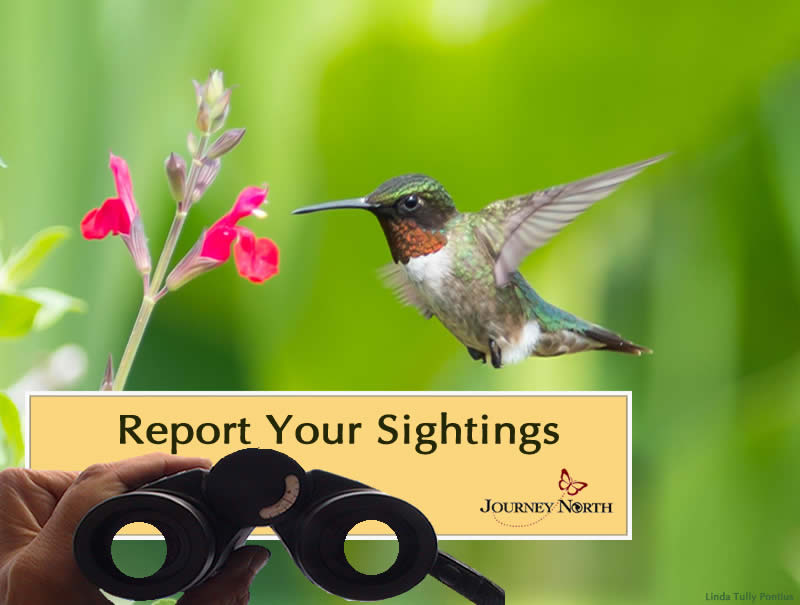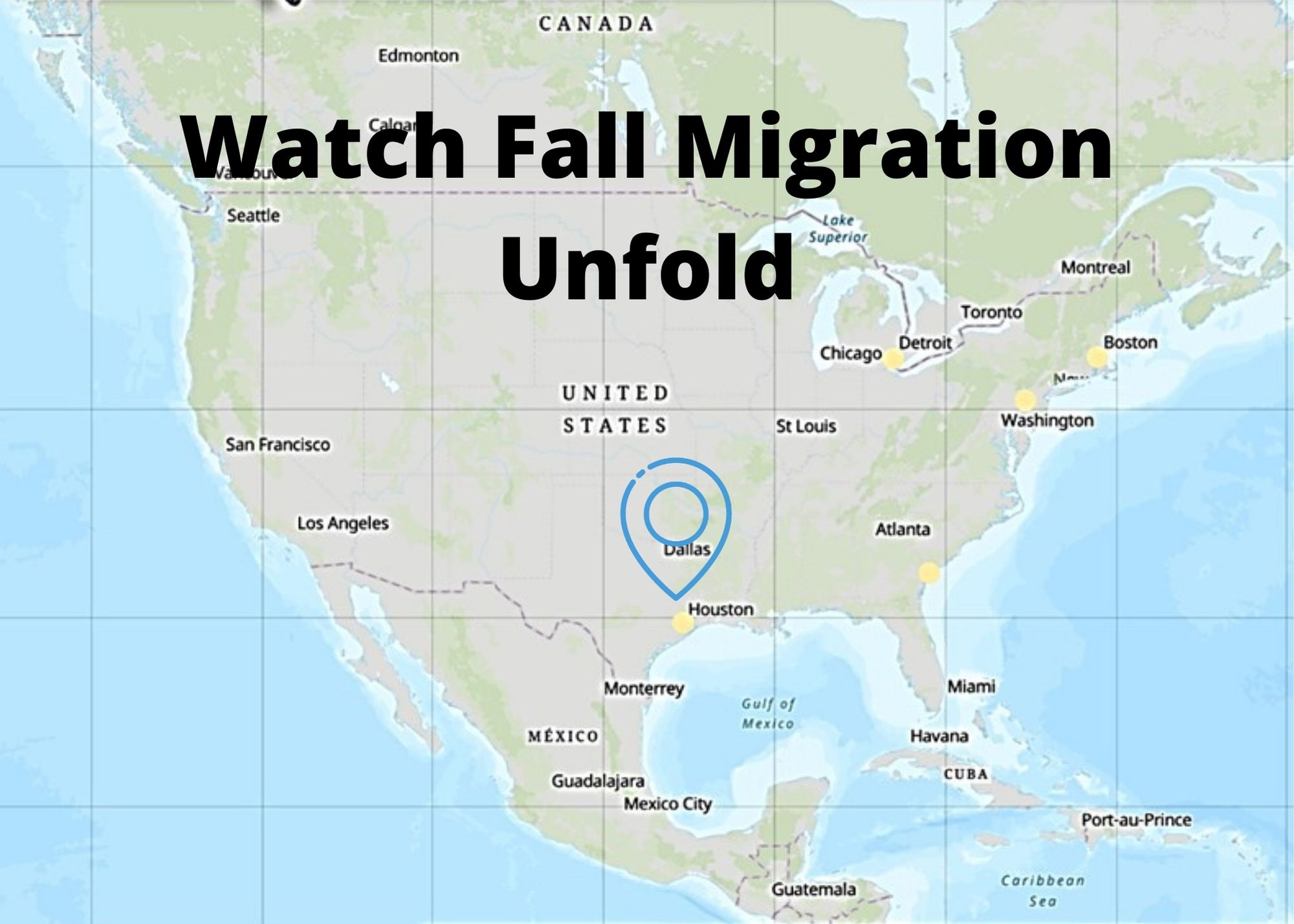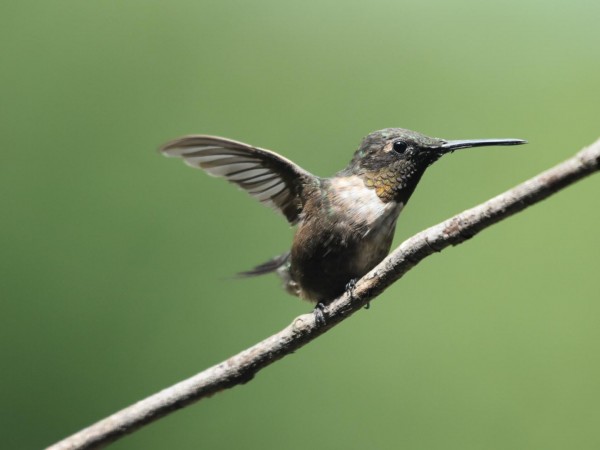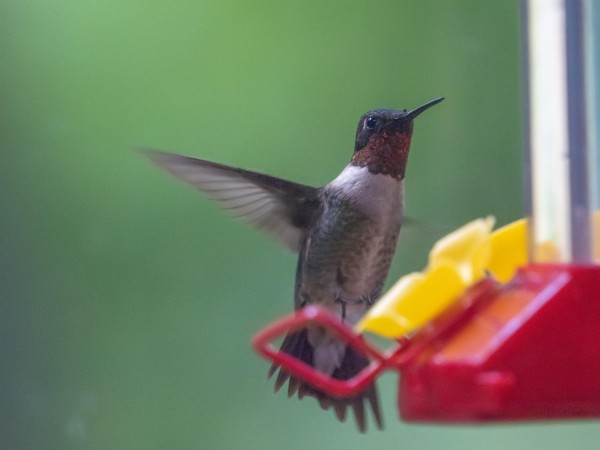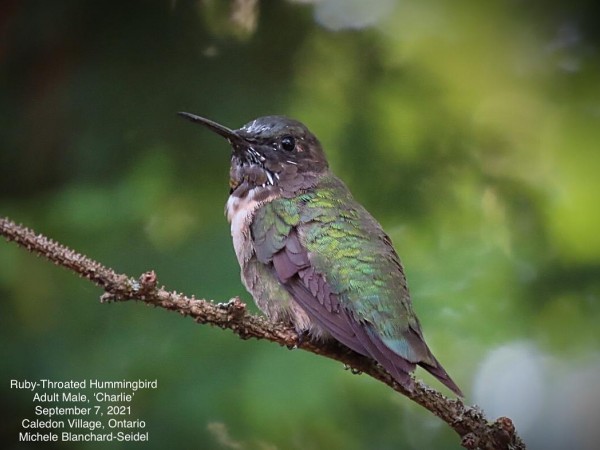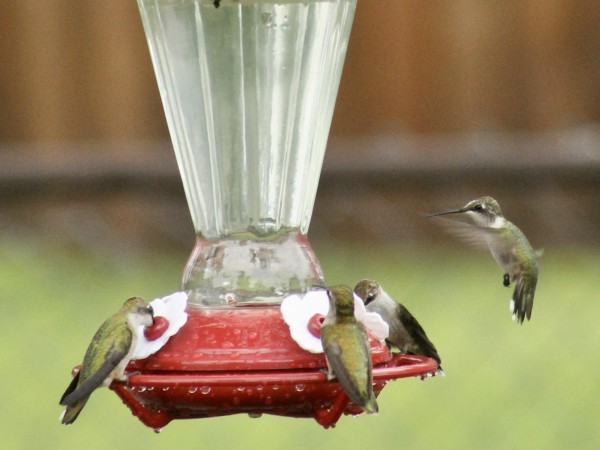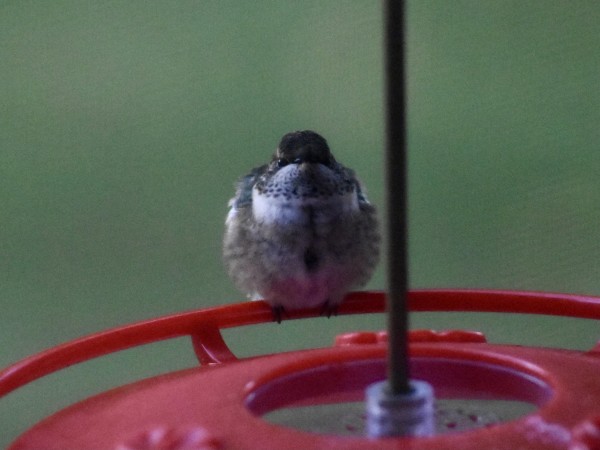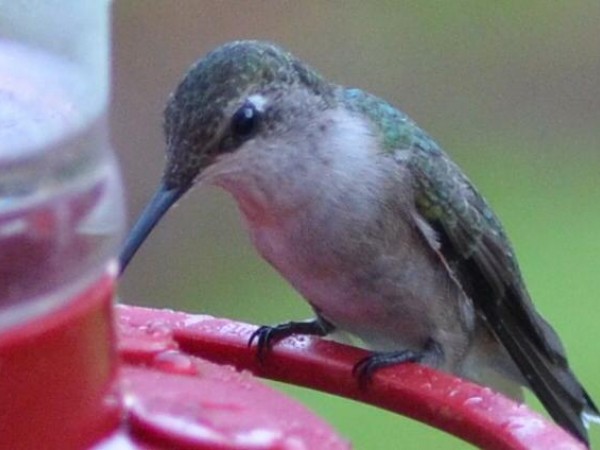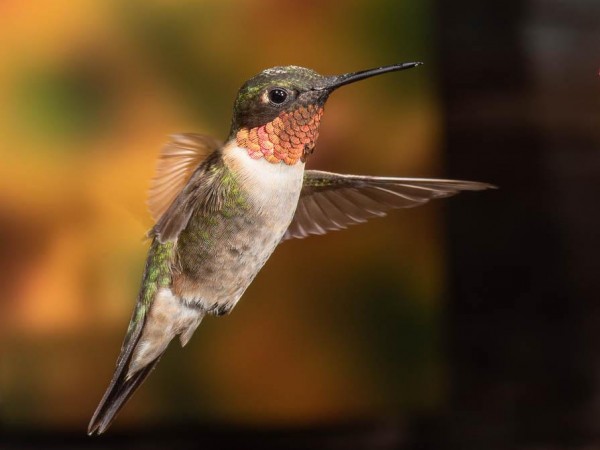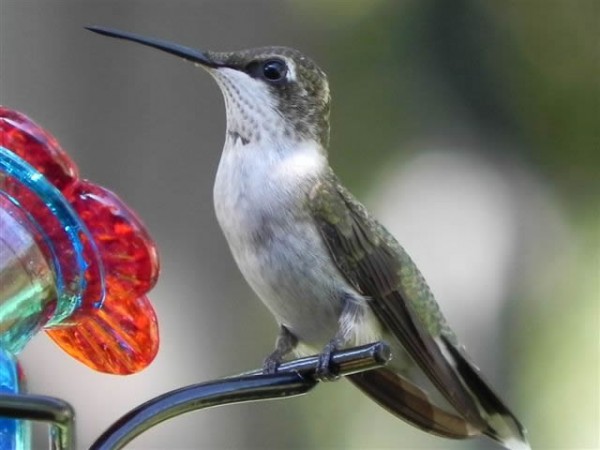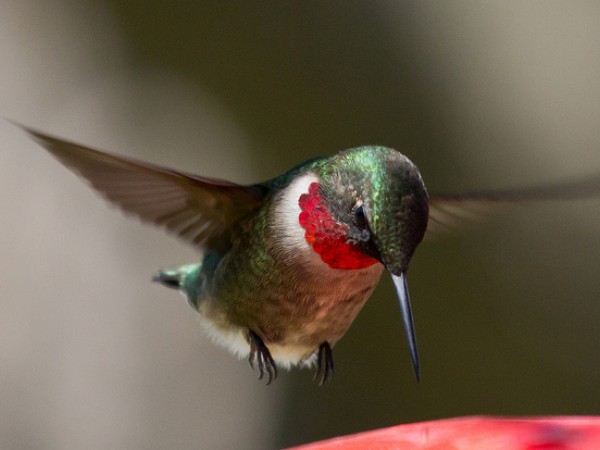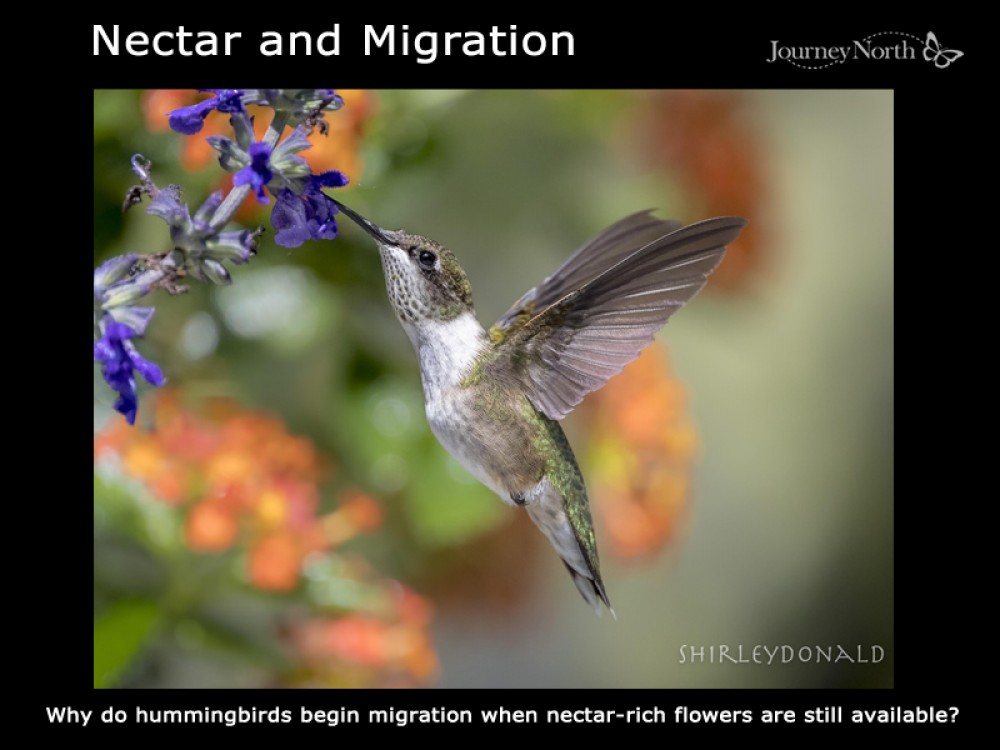Hungry Hummingbirds
Fall is just over two weeks away and hummingbird migration has begun in earnest. Keep reporting your observations of hummingbirds to Journey North.
Adult Male Hummingbirds
In the fall, Journey North asks our observers to report observations of adult male hummingbirds. Why focus on male hummingbirds? Adult male hummingbirds are the first to head south with females and juveniles following not too far behind. Because of their bright, bold plumage, male hummingbirds are often easier to spot as new arrivals and they can be more conspicuous in their absence once they migrate south.
William in El Prado, NM: Solitary adult male Black-chinned Hummingbird who joined six Black-chinned Hummingbird females at nectar feeders 09/02/2021 was not present this morning, indicating he might have moved on. Hummingbird count on 09/03/2021 remains at six Black-chinned females." (09/03/2021)
Kate in Elkridge, MD: "Our resident male (Ruby-throated Hummingbird), who has been with us all season, left us today for his long journey south. I saw him early this morning but by 9am he was gone...no longer sitting on his perch or protecting his feeders. I knew it was coming he had been nectaring nonstop from flowers and feeders the last few days. God speed little one... you will be missed and thanks for many wonderful memories." (09/04/2021)
Marjorie in Lowell, MI: "Through the window of the dining room, male Ruby-throated Hummingbird sips nectar from one of 5 feeders we have around the property. Surprised that we still have adult males around." (09/05/2021)
Mark in Katy, TX: "6 males, various species, battling for my 3 feeders." (09/06/2021)
Michele in Caledon, ON: "My Charlie is still here. He is the latest adult male [Ruby-throated Hummingbird] I’ve ever seen at my feeders (and he’s been with me all summer). He’s likely still here because he’s molting, which takes a lot of energy—energy he needs to make that epic journey south." (09/07/2021)
Building Up Fat Reserves
Just before and throughout migration, hummingbirds feed intensely to build up necessary fat reserves to sustain them for the hundreds or even thousands of miles they have to fly to reach wintering grounds.
Sandra in Mendocino, CA: "Female Rufous feeding on the honeysuckle and taking a bath at our fountain." (09/02/2021)
Jennifer in Lawrence, KS: "The feeding frenzy is in full force - there were as many as 15-20 [Ruby-throated Hummingbirds] circulating around our feeders. I think this was many as we have seen at once - they do visit the remaining flowers for nectar but spend more time on the feeders." (09/03/2021)
Margaret in Hendersonville, NC: "[Ruby-throated] hummer was nectaring from geranium flowers on my deck and moved down to nectar from jewelweed growing in my yard." (09/05/2021)
M in Pekin, IL: "We have 2 feeders and plenty of hummingbird favorite flowers in the yard. This chunky juvenile [Ruby-throated Hummingbird] claimed a 6:30 am spot at the feeder. It’s been here for a few days now feeding heavily. It’s larger than the others we’ve seen and looks like a huge round bumblebee when it flies away!" (09/05/2021)
Carla in Crowley, LA: "This juvenile Ruby-throated youngster fed continuously for 1 & 1/2 minutes straight, flew off, then returned immediately to feed for another 45 seconds. That underscores how incredibly important it is to keep the feeders cleaned and refilled with fresh nectar. The hummers enjoy cold nectar here in south Louisiana." (09/05/2021)
Early Arrivals in Mexico
Some Ruby-throated Hummingbirds are already arriving in northern Mexico. This is just the latest pit stop on their journey to wintering grounds in southern Mexico and Central America.
Arnulfo in Miquihuana, TAM: "Three adult males, 3 adult females and 1 subadult. They were feeding on prickly pear fruit juices, previously pecked by woodpeckers." (09/05/2021)
Stopover Sites
Migration is a perilous time of life. Migrating hummingbirds must continue to find food and nectar to fuel their long journey. How do they decide where to stop? Which resources are important? How long do they stay? Your reports help us better understand stopover ecology to answer questions like these. High quality stopover sites are critical for successful migration.Take a tour of your neighborhood with the eyes of a migrating hummingbird. Can you identify welcoming stopover sites where hungry hummingbirds can rest and refuel?
Below are some steps you can take to help migrating hummingbirds.
- Continue to maintain your hummingbird feeders until temperatures drop below freezing.
- Continue to nurture your pollinator gardens. Next year, consider planting brightly-colored native flowers with long tube shapes. Remember hummingbirds are attracted to the bright colors not smell. Follow this link to just a few planting suggestions: Photo Gallery of Fall Nectar Sources.
- Continue reporting your observations to Journey North.


